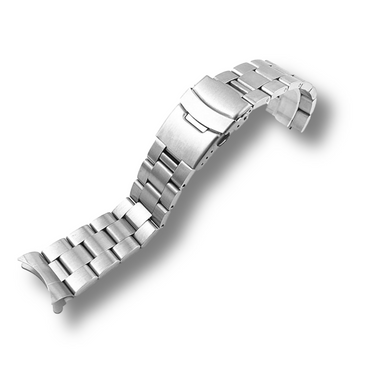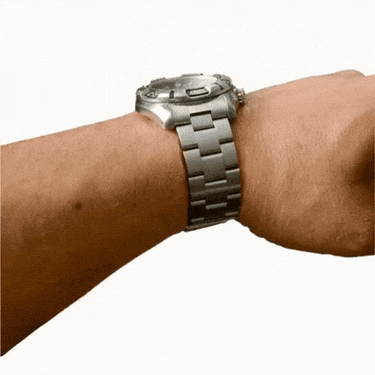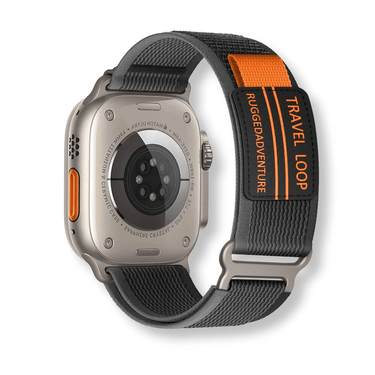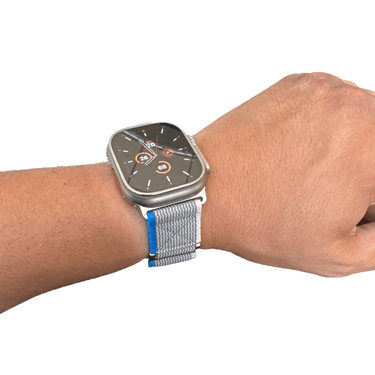The Importance of Maintaining and Cleaning Your Watch Winder
As a watch enthusiast, you take pride in your collection. You invest time and money in finding the perfect timepiece, but have you ever stopped to consider the importance of maintaining and cleaning your watch winder?
A well-maintained watch winder not only keeps your automatic watches running smoothly but also prolongs their lifespan. Let's face it, automatic watches are not cheap.
A high-quality watch deserves a high-quality watch winder that will keep it running accurately for years to come. Neglecting the maintenance and cleaning of your watch winder is like neglecting an entire aspect of your collection.
Without proper care, dust and debris can accumulate inside the watch winder, potentially leading to damage or malfunctions. Some may argue that a dirty or poorly maintained watch winder doesn't affect the performance of their watches.
However, as someone who has experienced the frustration of a malfunctioning automatic watch due to a neglected watch winder, I can confidently say that proper maintenance is crucial. Don't settle for subpar performance from your automatic watches – invest in maintaining and cleaning your watch winder.
The Benefits of a Well-Maintained Watch Winder
A well-maintained watch winder offers numerous benefits beyond just keeping your watches running smoothly. For one, it helps preserve the quality and appearance of both your timepieces and the exterior of the box itself.
Secondly, investment preservation is also key with this accessory. Most luxury brands offer boxes specifically designed for their product with custom fit padding ensuring no part rubs against another during storage when properly utilized through use within their original packing materials again almost always appears unused by collectors further down the line increasing value at resale times such as auction houses etcetera.
If you collect rare or vintage timepieces that require specific winding patterns or rotations per day, a well-maintained watch winder can provide the necessary customization to meet those unique needs. With a reliable watch winder, you can ensure that your timepieces are always running accurately and keeping perfect time.
Maintaining and cleaning your watch winder is crucial for ensuring the longevity of both your timepieces and the accessory itself. Don't skimp on proper care and maintenance – invest in the best for your automatic watches.
The Basics of Watch Winder Maintenance
Why Regular Maintenance and Cleaning is Important
Listen up people, your watch winder is not just a fancy accessory for your automatic watch. It's a machine that needs regular maintenance and cleaning to keep it running smoothly.
Neglecting to do so can lead to costly repairs down the road, or worse, permanent damage that cannot be fixed. Do you really want to risk ruining your expensive timepiece because you couldn't be bothered with proper maintenance?
I didn't think so. Regular maintenance and cleaning should be a part of every watch winder owner's routine.
Not only does it keep your machine running smoothly, but it also helps extend its lifespan. A well-maintained watch winder will keep your watches wound properly, preventing them from losing accuracy or stopping altogether.
The Tools You Need for Maintenance and Cleaning
Now that you know why regular maintenance and cleaning are important, let's talk about the tools needed for the job. First off, you'll need a soft cloth or microfiber towel to wipe down the exterior of the machine. This will help remove any dust or debris that may have accumulated over time.
Next up is a can of compressed air. This handy tool will help blow out any stubborn dust or debris from hard-to-reach areas like the motor and gears.
For more thorough cleaning, you may need some Q-tips dipped in rubbing alcohol or specialized cleaning solutions designed specifically for watch winders. Be sure to read the instructions carefully before using any cleaning products on your machine.
Last but not least, don't forget about lubrication! Your watch winder's motor and gears need lubrication to run smoothly and prevent wear and tear over time.
Look for lubricant specifically designed for watch winders at your local jewelry store or online. Maintaining and cleaning your watch winder is an essential part of being a responsible owner.
Not only will it keep your machine running smoothly, but it will also help extend its lifespan and prevent costly repairs. Don't skimp on proper maintenance and invest in the tools needed for the job - your timepiece (and wallet) will thank you later.
Cleaning Your Watch Winder
The Importance of Keeping Your Watch Winder Clean to Prevent Dust and Debris Buildup
Listen up watch winder owners: if you're neglecting your machine's cleanliness, you're doing yourself and your precious timepieces a massive disservice. Think about it - your watch winder rotates continuously to keep your automatic watches wound. So, it's only natural that over time, dust and debris will accumulate inside the machine, clogging up the gears and potentially damaging the delicate movements of your watches.
Not only does a dirty watch winder pose a risk to your watches' longevity, but it's also just plain unsightly. Who wants to showcase their stunning collection of timepieces on top of a dusty, grimy machine?
Nobody! Take pride in not only owning high-end automatic watches but also maintaining them properly.
Step-by-Step Instructions on How to Clean Your Watch Winder Including Tips on Which Cleaning Solutions to Use
Now that we've established the importance of a clean watch winder let's get into how exactly you can go about cleaning it. First things first - gather up all necessary tools including a soft-bristled brush (a makeup brush works well!), microfiber cloths or cotton swabs for wiping down surfaces, dish soap or gentle cleaning solution diluted with water (avoid harsh chemicals or alcohol-based cleaners), and a small vacuum cleaner with an attachment for removing dust from hard-to-reach areas.
Start by unplugging your watch winder from its power source and removing any watches from inside. Use the soft-bristled brush to gently sweep away any loose debris and dust.
Next, dip a microfiber cloth or cotton swab into the diluted cleaning solution and wipe down all interior surfaces thoroughly. Be sure not to oversaturate the material as excess moisture can damage sensitive components.
For any nooks and crannies that are difficult to reach, use the vacuum cleaner attachment to gently suck up any remaining dust or debris. Once you're satisfied that all surfaces have been cleaned, wipe everything down again with a dry microfiber cloth and let your watch winder air dry completely before plugging it back in and placing your watches inside.
Remember, keeping your watch winder clean is a critical part of maintaining its longevity and aesthetic appeal. Don't neglect this essential task if you want to protect your investments!
Maintaining Your Watch Winder's Motor
The Importance of Motor Maintenance
The motor is the heart of your watch winder, and without it, your luxurious timepieces won't be able to run at their full potential. That's why maintaining your watch winder's motor should be a top priority.
Neglecting this vital component can lead to numerous problems, such as reduced winding efficiency or even permanent damage. If you notice that your watch winder is not winding as it should, the first place to check is its motor.
It's important to note that different types of motors require different maintenance procedures. So, before attempting any maintenance on your watch winder's motor, make sure you consult the owner's manual for specific instructions.
Tips for Lubricating and Adjusting the Motor
Lubrication is one of the most critical aspects of maintaining a motorized watch winder. Proper lubrication will ensure that all moving parts are working smoothly and prevent excessive wear and tear on the components.
The lubricant used should be specifically designed for use in small motors and watches. When it comes to adjusting the motor, there are several things to keep in mind.
First off, make sure any adjustments made are done carefully and methodically so as not to cause further damage. Secondly, if you're unsure how to adjust certain parts or components, seek out professional help from a qualified technician or repair specialist who can provide guidance and support.
Don't forget that regular cleaning is just as important as lubrication when it comes to keeping your watch winder running at optimal performance levels. By following these simple tips for maintaining your watch winder's motor, you'll ensure that it operates smoothly and reliably for years to come!
Troubleshooting Common Issues with Your Watch Winder
The Noisy Watch Winder Problem
Ah, the noisy watch winder problem. This is one of those issues that can drive any watch aficionado up the wall.
You get home after a long day at work, put your feet up, and listen to the reassuring hum of your automatic watches winding away, only to be interrupted by an annoying buzzing sound coming from your watch winder. What do you do then?
Well, don't throw it out just yet! First things first – check if your watch winder is properly mounted on a flat surface.
If not, simply adjust it so that it sits level. If this doesn't help, you may want to examine and tighten all screws and bolts holding the case together.
If that still doesn't solve the problem (which can be infuriating), try placing rubber pads under each foot of the watch winder. This can absorb some of the vibration and reduce noise levels.
The Malfunctioning Watch Winder Problem
There's nothing more frustrating than a malfunctioning watch winder – especially when you've spent good money on it! But before you start blaming everything around you for this problem, let's break down what could actually be causing this issue. The first step in addressing this issue is to check whether your watches are correctly seated in their holders or not?
Sometimes they might be loose which may lead them to lose position or cause malfunctioning of the device itself. If that's not the issue – then let's look at power supply issues as potential causes of malfunctioning issues in a Watch Winder.
It’s always best practice to ensure that cables are well connected and there isn’t any damage. - if none of these things fix your problems - Don't worry!
Just reach out to customer service team for help in diagnosing the problem. They will know best how to address any issues you may experience.
The Unresponsive Watch Winder Problem
If you've ever experienced the unresponsive watch winder problem, then you know how frustrating it can be to have your watches not winding properly. There are a couple of potential causes of this issue, so let's look into them.
First things first – ensure that the power source is functioning properly and securely connected. If that doesn't fix the problem - check whether your watches are correctly seated in their holders or not?
Sometimes they might be loose which may lead them to lose position or cause malfunctioning of the device itself. Another root cause could be related to lubrication problems which prevent movement.
Wiping down and providing proper maintenance can help ensure these mechanisms work as designed. If all else fails and nothing seems to work, don't hesitate to contact customer support for help and specialist advice on repair or replacement options.
Advanced Techniques for Watch Winder Maintenance
Disassembling and Reassembling Your Watch Winder - Not for the Faint of Heart
If you're truly committed to keeping your watch winder in top condition, sometimes a basic cleaning just isn't enough. That's when it's time to tackle the intimidating task of disassembling and reassembling your watch winder.
A word of warning: this is not a job for the faint of heart, or anyone who isn't extremely confident in their mechanical abilities. One wrong move, and you could end up seriously damaging your beloved watch winder beyond repair.
That being said, if you're up for the challenge, there are a few key things to keep in mind. First and foremost, make sure you have all the necessary tools on hand before you begin.
This will likely include screwdrivers (both flathead and Phillips), tweezers, pliers, lubricant, and anything else specific to your particular model. Once you've assembled everything you need, take a deep breath and approach the task methodically.
Start by carefully removing screws or other fasteners one at a time, taking note of where each one goes so you can easily reassemble everything later on. Keep all parts organized and clean as you go - trust us, it'll save you a lot of headaches down the line.
The Art of Complex Repairs - Why DIY Isn't Always Best
In some cases, even disassembling your watch winder won't be enough to fix more serious issues that may arise over time. That's when it may be necessary to turn to more complex repairs - but here's where we have some unpopular advice: don't attempt these repairs yourself unless you truly know what you're doing.
Yes, we know that DIY culture is huge these days and there's something exhilarating about the idea of taking matters into your own hands. But when it comes to delicate and intricate machinery like a watch winder, one small mistake can have disastrous consequences.
If you're not a trained professional with experience in watch repair, it's best to leave these kinds of repairs to the experts. Sure, it may cost more upfront, but trust us - it's better than having to replace your entire watch winder because you accidentally snapped a tiny spring or damaged an essential gear.
The Bottom Line: Maintenance is Key
At the end of the day, whether you're sticking to basic cleanings or venturing into more advanced maintenance techniques, the most important thing is that you're taking care of your watch winder on a regular basis. Yes, we know that cleaning your watch winder isn't exactly glamorous or exciting - but trust us when we say that neglecting this vital aspect of ownership can lead to serious problems down the line. By staying on top of maintenance and being willing to invest in repairs when necessary (even if it means calling in a pro), you'll ensure that your beloved timepieces stay safely and reliably wound for years to come.
Conclusion Maintaining and cleaning your watch winder is crucial for its optimal performance and longevity. If you want to ensure that your watches remain functional and accurate over time, then investing in a high-quality watch winder and taking proper care of it should be a top priority.
By following the tips outlined in this article, you can keep your watch winder running smoothly for years to come. One key takeaway from this article is the importance of regular maintenance.
It's easy to neglect the upkeep of our possessions, but doing so can lead to major problems down the line. By taking just a few moments each month to clean and maintain your watch winder, you can save yourself a lot of headache (and money!) in the long run.
Another important takeaway is that DIY repairs are not always the best option. While it can be tempting to try fixing things yourself, sometimes it's best to leave more complex repairs to the professionals.
Attempting a repair without proper knowledge or tools can cause more harm than good - so if you're not sure what you're doing, it's better to seek help from an experienced technician. Maintaining your watch winder doesn't have to be a chore!
With some basic knowledge and a few simple tools, you can make upkeep feel like second nature. So don't let laziness or lack of know-how hold you back from taking good care of your watches - start today!

























